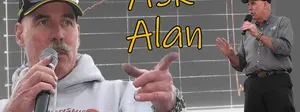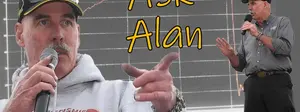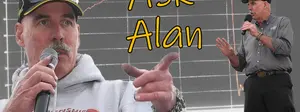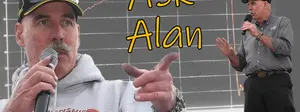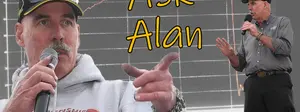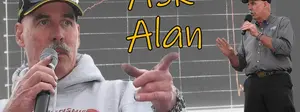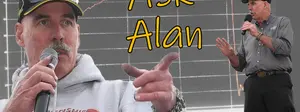

Ask Alan: Backing it down, spraying it down, close finishes, and much more
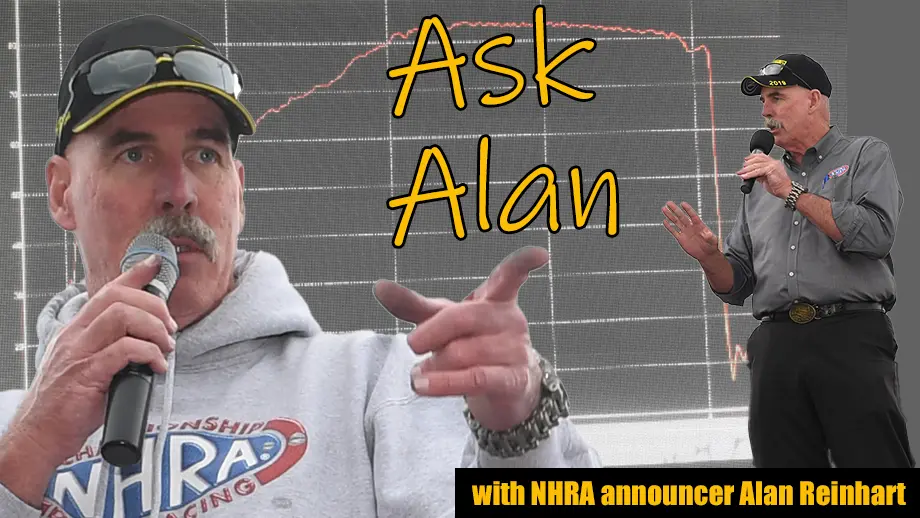
At every NHRA national event, NHRA announcer Alan Reinhart offers fans the chance to send him an email with technical questions about the race cars, the tracks, and the procedures. As part of a semi-regular feature, we’ll share those questions and answers on NHRA.com.
Fan can write to Reinhart at announcer@nhra.com.
Here we go!
When a Top Fuel car gets stuck at the top end, when they rock it to unstick it, sometimes they come up with a little bar or pipe. what is that? — Jack Liebold
When the clutch locks up, sometimes they can rock the car and get it to break free, sometimes they have to engage neutral, which requires over-centering the reverser. The reverser is under the puke tank (the big round canister behind the engine), which it is mounted with steel rods. They will pull the rod out, rock the puke tank forward, then reach the reverser. Then instead of taking the time to line it up and reinstall the rod, they just hand it to the driver.
What is the reason a crewmember appears to wind the engine of a Top Fuel machine backwards with a giant socket wrench after a run? — Bob Mack
That is known as "backing it down," and it is done to ensure that no fuel is in the cylinders. If there is fuel in a cylinder when they shut it off, it could explode next time the engine spins over. The exhaust valve is at the very bottom of the combustion chamber, and by turning the engine backwards, if there is any fuel in a cylinder, it will simply run out the valve and into the header, where it can't cause any problem.

Why does the Safety Safari treat part of the track with rubber, but all of it with spray? — Kyle Twarog
Once the cars are moving and generating downforce, they don't need the extra grooming on that part of the track. It's much more critical early in the run.
Looking back a couple of years at a Top Fuel car, before a car did a burnout, teams would put what looks like a glove over some sort of vent located up near the front tires. Once the burnout was completed, a team member would remove the glove. What is it that the glove was doing, what is that item they would cover up, and why do modern Top Fuel cars no longer have that item to covered up? — Greg Kuhn
The glove or, in some cases, just a cover was there to prevent any debris from getting in the fuel tank. It was really more for when the car was being towed through the pits, but most teams did leave it on for the burnout. They took it off because the vent needed to be unrestricted for the run. Many cars now have the vent located under the front wing, so the snorkel on the top of the body is no longer there.
Do Pro Stock Motorcycles use air shifters? — Bob Whalen
Yes, they do. They have transmissions that can be shifted under throttle, and the driver has a button on the handlebar that activates the air cylinder to change gears.
Over the weekend, there was a race where the margin of victory was 6/10,000th for a second. Has there been a time where the finish was closer, say, 1/10,000th or 1/100,000th? — Tom Barker
Yes, it's fairly common, especially in the Sportsman classes, where they are trying to get a close finish to avoid a breakout. The readout that we have goes out to the ten-thousandth of a second. That's four places, .0000-second. The win picker actually goes out seven places to the ten millionth of a second. When we have a margin less than one thousandth, our announcer screen and the drivers’ time slips will show less than .0000. The most famous was the 2016 Atlanta Top Fuel final, where Doug Kalitta beat J.R. Todd by less than .0000-second.
Why is there no disqualification for crossing the centerline after the finish line? Cars are at their highest speed, so there seems to me more danger crossing the line there. Also, are the fuel cars allowed to cross the centerline after 1,000 feet or the quarter-mile? — Jim Prezlock
Because you have to have a line (literally) somewhere, and you have to cross over to turn off the track. So, would you say: OK, 100 feet past the finish line? Or 500 feet past? Would you penalize someone for taking the early turnoff if it was this side of the designated area? What if the parachute turns the car and it crosses, the driver didn't do anything wrong, but would you disqualify him? There needs to be a black and white rule that can't be misinterpreted. And there is.
The idea is under acceleration you can't cross. And fuel cars get penalized points for crossing after the 1,000-foot finish line and before the 1,320. But they don't get disqualified.
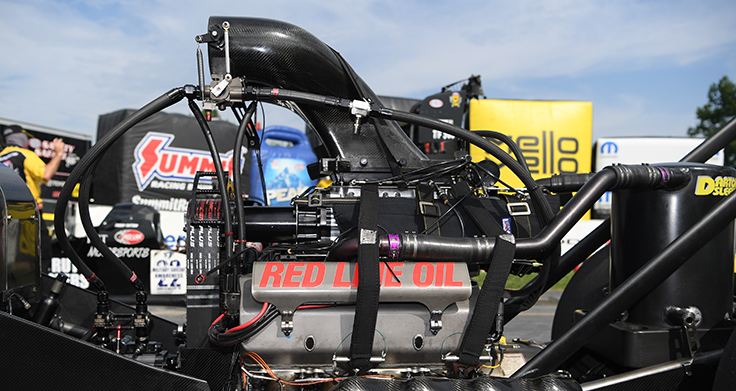
What are the differences between a Roots-type blower and a screw-type blower? — Baron Camper
A Roots blower is an air pump. As the rotors spin, the open cavities are filled with air and pushed out the bottom into the manifold in pulses as each rotor goes around. They require a lot of horsepower to spin.
A screw blower is a compressor — the air enters the top and is compressed in the blower then forced out the bottom in a much more linear way (no pulses), so you have smoother delivery, and they take much less horsepower to operate. A screw blower is more efficient.
Burning alcohol like a Top Alcohol Dragster or Funny Car or a Pro Mod if you removed the overdrive limits for both, the screw will make 500 more horsepower.
If in the final round, one of the opponents cannot make it to the line to even stage, so the other opponent stages, runs a full round, but crosses the centerline, does the win go to the driver who didn't even make it to the line? — Mark Marbley
No. You can't lose to a "Ghost." So, in your example, as soon as the driver staged the car, he (or she) wins, no matter what happens after that.























